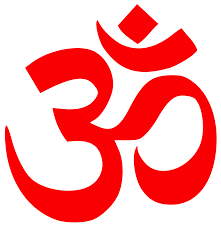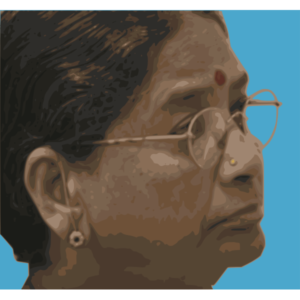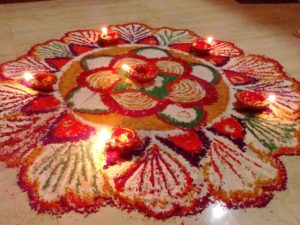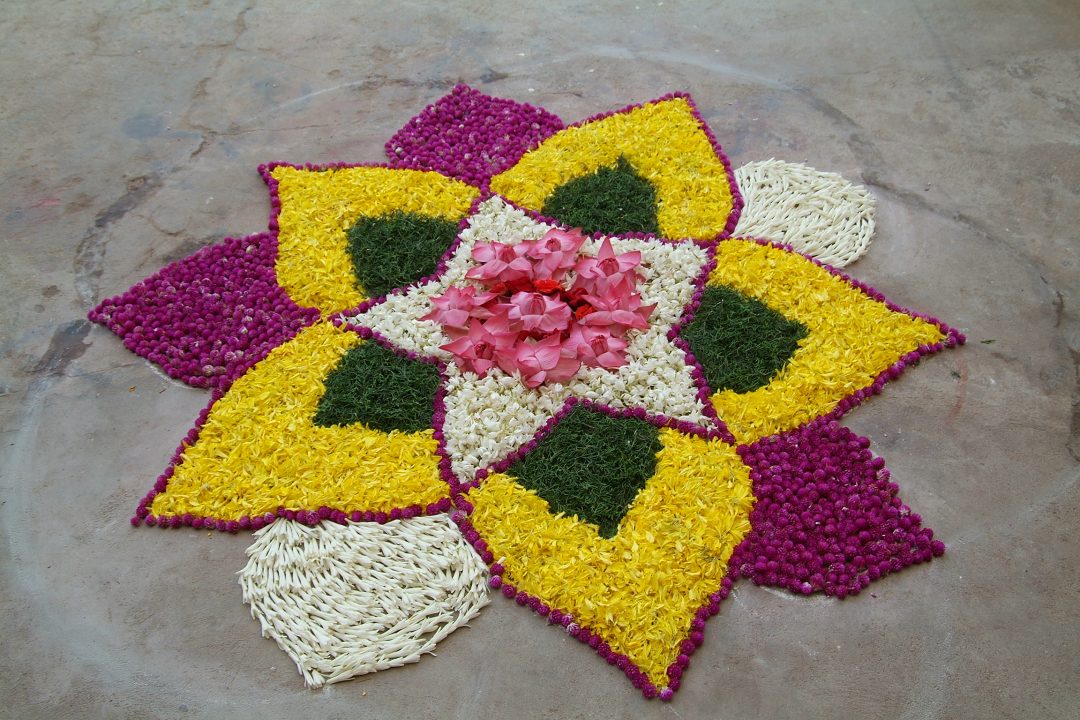Symbols are an integral part of the Hindu way of life. Most of them have a religious significance while others are symptomatic of the traditional value system that forms the basis of Hinduism.
Symbols in Hinduism, are a pictorial representation, a written character, an icon or a gesture. They either have a religious connotation or hold a spiritual and righteous consequence. There are hundreds of symbols in Hinduism, some in use daily, some during rites and rituals and some used for specific poojas, worship or traditions.
The six main symbols that characterize the everyday life of a Hindu are the iconographic symbols, symbolic physical gestures of a Hindu and the pictorial representation.
ICONOGRAPHIC SYMBOLS:
OM
This is a syllable pronounced Om’ with the popular symbolic representation in the Devnagri script. Om’ is used before any good venture or auspicious ritual, as an oral utterance or as a written pre-fix in texts.
It represents the three worlds of earth, atmosphere and heaven, the three major Hindu gods – Brahma, Vishnu, and Siva, the three sacred Vedic scriptures – Rig, Yajur, and Samaveda. Thus embodying the entire universe, it symbolizes good divine intervention and fortune.
 The use of Om’ denotes good luck and has varying significance, depending upon its usage.
The use of Om’ denotes good luck and has varying significance, depending upon its usage.
Prayer – Every prayer, mantra or chant, begins with Om’. All rituals or pooja begin with Om’. This encompasses the entire ritual to follow.
Venture – When written text is pre-fixed with Om’, it is essentially inserted at the top centre as an inscription. This placement symbolizes the elevated plane of Om’, and its supreme importance. It also indicates the work is blessed. When an individual begins his work with the utterance of Om’ this is symbolic of seeking blessings of the Gods.
The placement of the iconographic representation of the symbol Om’ at the entrance of a house or household temple is synonymous with good luck.
In yoga, Om’ assumes the form of mediation, which takes a person beyond the realms of the materialism and the worldly.
TILAK AND BINDI
The elongated mark on the forehead of a Hindu male, called tilak is symbolic of good luck. Applied in the morning, before he ventures out on his day’s work, a tilak signifies beginning the day with blessings of God. It may be a simple longish mark of holy ash or sandalwood paste or a tilak of roli (a red powder made of lead) and chaawal (rice grains).
 Where a family member or elder applies the tilak to the male’s forehead, this means she wishes him a safe journey and luck on his work. It may also be applied as three horizontal marks of turmeric paste, which again is symbolic of success for the day’s venture and his well-being.
Where a family member or elder applies the tilak to the male’s forehead, this means she wishes him a safe journey and luck on his work. It may also be applied as three horizontal marks of turmeric paste, which again is symbolic of success for the day’s venture and his well-being.
This assumes the form of the Bindi, on the woman’s forehead. The Bindi is a dot, symbolic of warding off the evil spirits and epitomizing the female energy.
SWASTIK OR SATHIYA
Swastika in Sanskrit, means ‘all is well’. Its iconographic representation as a two angular S’es crossing at mid-point is symbolic of good fortune and well-being. It is the most auspicious symbol etched or drawn on doorways, entrances or temples. Used in doorways or entrances, this symbolises good luck. As part of rituals, it wards off evil spirits and offers protection when supplemented with four dots and extensions of the four arms. This is then called the ‘Sathiya’ or ‘Sathiyo’.
PHYSICAL GESTURES AS SYMBOLS:
BOWING OF HEAD
This is symbolic of respect, obeisance, allegiance or loyalty. It assumes different meanings according to the situation. When a student bows his head before his guru or teacher, this symbolizes respect and obeisance. This may also be accompanied with folded hands. When a member of a family bows his or her head before another family or household member, this signifies respect, loyalty, obeisance and pranam’. When used in conjunction with touching of feet, it means that blessings are being sought from the peer or elder in the family. When a person bows his head to another passing by, this symbolizes a greeting and camaraderie.
Bowing of head before partaking of food, symbolizes a prayer to the Goddess Annapurna, thanking her for the meal before him.
The commencement of any risky venture is always begun with a bowing of the head. This is indicative of a silent prayer being said, seeking protection and blessings of the gods. This is especially common amongst the rustic and unlettered, before lifting or shifting a heavyweight. It also indicates their seeking of strength from the Gods to enable them to do the work. Bowing of head before a deity, idol or image is symbolic of prayer to the Gods and Goddesses before seeking his blessings.
When a Hindu bows his head before his Pooja room or temple, this symbolises a prayer to his family deity and blessings sought from the Gods guarding his family. This is usually in conjunction with the folding of hands or touching the forehead to the ground, or both. When a Hindu bows his head to the accompaniment of folded hands and eyes shut, this is symbolic of silent prayer or blessings from the deities or a particular deity, a forefather or parent.
FOLDING OF HANDS
This symbolizes prayer, beseech or humility. When accompanied by bowing of the head, the gesture signifies pranam’ before the deity or the person.
When the head is bowed with folded hands before God, this symbolizes prayer and meditation or seeking of blessings or favour.
Folding of hands before a stranger or family member, maybe symbolic of welcome, beseech or plea, for sympathy, consideration, compassion or forgiveness.
PICTORIAL REPRESENTATIONS :
RANGOLI
Rangoli or Alpana is a diagrammatic or pictorial design, created on the floor, using white or coloured paints or powder, made of natural chalk or rice. The Rangoli is a unique craft using four fingers holding a swab soaked with paint or a pinch of powder, to enact the design.
 Rangoli is drawn at the entrance of a home which is indicative of the purity of mind and well-being of the household. Hinduism believes that when the mind and soul are pure, goodness is ushered in.
Rangoli is drawn at the entrance of a home which is indicative of the purity of mind and well-being of the household. Hinduism believes that when the mind and soul are pure, goodness is ushered in.
Rangoli drawn before the household deity, pooja temple or tulsi plant symbolises a festive spirit, a healthy environment and well-being, which inevitably ushers in good luck, health and happiness to the family. Rangoli is thus associated with various festivals, in particular, Onam and Diwali, which mark a new beginning.






